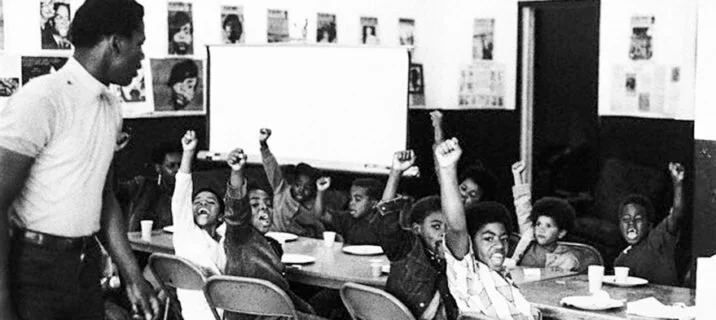Community & Creativity
“To make sense of the AACM aesthetic… requires situating the association within the social contexts and philosophic traditions from which it emerged. Doing so will show that the AACM’s intent represented a legitimate challenge to mainstream conceptions of artistic value and stylistic continuity, having based an aesthetic on alternative supports of grass-roots self-help and radical afrocentricity. These supplied the social framework for a revitalization of the African-American musical sensibility through the oppositional language of modernism.”
Ronald M. Radano, “Jazzin’ the Classics: The AACM’s Challenge to Mainstream Aesthetics” 1
There is evidence that the aforementioned Political and Musical Organizations were communicating with each other and thus developing a set of shared values. Perhaps the most important of these values is autonomy. Convinced that their efforts and communities would only be met with violence and brutality from mainstream American society and from the state, these Black musical and political groups worked towards developing the infrastructure for surviving and thriving autonomously. As Radano asserts in the above quote, the artistic value of the music produced by groups like the AACM is deeply connected to “grass-roots self-help.” 2 Community self-expression thus serves as an ultimate goal.
The relationship between music and its social and political contexts is especially charged for minority and marginalized communities because avant-garde and experimental forms such as improvised music are seen as context-free expressions of individual genius. How can we see the work of improvised musicians as simultaneously rooted in community and context and as creative, imaginative expressions in their own right? This project has explored the vital role that the sense of community plays in the creativity of improvised musicians from Black communities across the United States.


